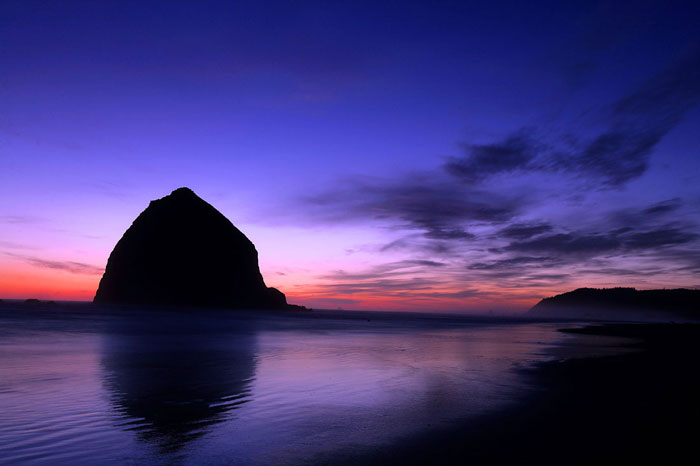
Forty-five minutes after sunset I used a very long exposure so that
the waters movement was smoothed out, which created a soft and subtle reflection.
Is what we see in a mirror actually what others see? Could our reflections actually be a look back at some important part of what has made us the photographers we are today? How about when we look at an object and then see it reflected in the water? When we “reflect” on the image, what are we actually seeing in our mind’s eye? How is different from what others see?
While we don’t always dwell on the great philosopher Immanuel Kant (professor of logic and metaphysics–wrote the books Critique of Pure Reason, Critique of Practical Reason & Critique of Judgement between 1781 and 1790—visit answers.com for more information.) while photographing in the field, there is a time and opportunity to enjoy and reflect not only on surroundings, but on ourselves.

A peaceful area to reflect upon as well as capturing a nice reflection shot.
It’s definitely a fact that where you are as a photographer today is fully based on your past experiences with a camera. If you take the time to look at the images you captured over the past years and compare them to the images you take now, you will, or should see, immense strides in your technique, style and overall quality. You may even see a change in the way in which your approach your subjects.
Thirty years ago I started my career in photography as a photojournalist specializing in sporting events. I would have never thought about looking for new ways to “reflect” on an image. There was little or no room for creative endeavors. It was all about clearly capturing the peak action that best represented the game or event. However, I do remember the enjoyment of capturing an image that was taken “outside of the box” and for pure pleasure. I captured the blur of a racecar crossing the finish line while the flagman and checkered flag were in focus. I guess that style of photography was even in me way back when, just waiting patiently to come to the surface.
Now, as a wildlife and nature photographer, it’s as if I am looking at nature scenes with a new set of eyes. I’m frequently finding myself looking for a means to creating an impressionistic view of a subject, with my present areas of interest being focused on water, trees, plants and flowers.
As I’ve developed this means of “seeing” and perfected my techniques, I have found that I want to share it with others, so if the participants of my workshops and tours show an interest in the topic and want to experiment with it, I will include it in the itinerary. It affords others the opportunity to take some time to look at their subjects with a new perspective and to allow them to tap into their creative side. Can a tree be viewed and captured as more than just a tree and water more than just water?
There are times when the situation presents itself and choosing the right technique becomes an important part of the photographic process. A nice example of this was on a boat trip in Alaska. While we were eating dinner a beautiful sunset started unfolding before our eyes. Everyone went outside and started capturing images of the colorful sky, the mountainous backdrop and a bit of color reflecting in the water. After a few shots were taken I noticed the color being reflected in the water and the shapes created by the wake of the boat. The appearance of this was more interesting to me and as I pointed it out to others, cameras began focusing more on the water right near us rather than on the scene further away.
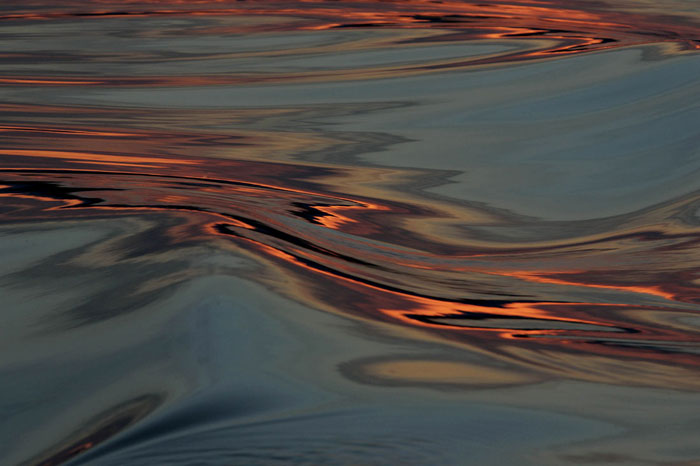
Tip: To capture interesting shapes, colors and patterns in the water, it’s best
to isolate a small section and use a fast shutter speed to freeze the movement of the water.
Nice calm water that creates a mirror reflection will not offer up an impressionistic view, but can bring about very dynamic shots. One of the most famous of these is of the Reflecting Pond at Schwabacher Landing in the Tetons outside of Jackson, Wyoming. Any photographer who has visited this national park has a photo taken from this iconic location. Another is of the Maroon Bells reflecting in Maroon Lake outside of Aspen, Colorado during the peak of fall color or, like the setting with the boat wake at sunset, some fun can be had with moving to the west end of the lake and concentrating primarily on the reflections in the water, especially if there is some movement to the water.
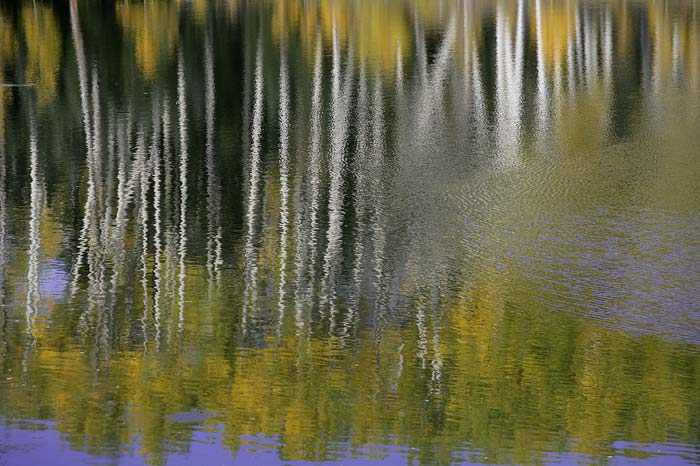
Maroon Lake, Aspen Colorado: Between the quaking leaves of the Aspen trees
and the moving water, this reflection takes on an impressionistic quality.
A faster shutter speed will freeze the ripples to freeze the movement of the water.
Photography reflections can become art depending on the technique used and what is creating the reflection. Many people make a project out of using Mylar to create very interesting reflective shots of flowers and other items with a lot of color. Reflections in raindrops on the end of leaves can also be a good study.
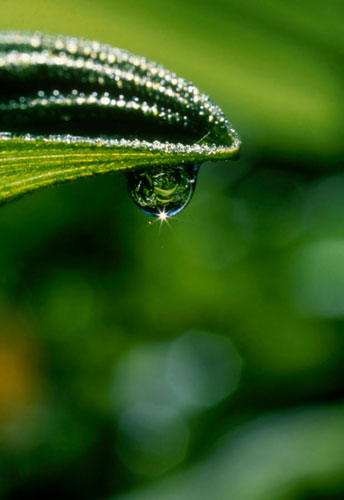
You can capture incredible details of the surrounding plants within a sparkling dew drop on the end of a leaf.
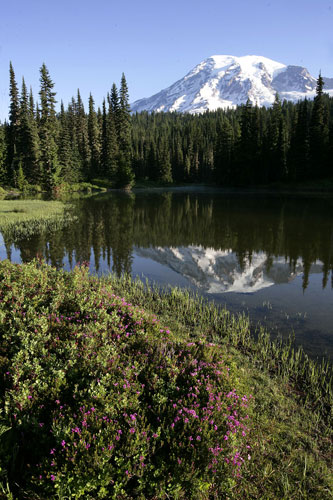
Mount Rainier at Reflecting Lakes, Washington: Great shots are for the taking of this dramatic mountain reflecting in the water.
What makes capturing abstract reflection images in water interesting are that the results may not been seen clearly until the image appears on your computer screen. The chance that something great might come out brings added excitement to the process of creating these types of images.
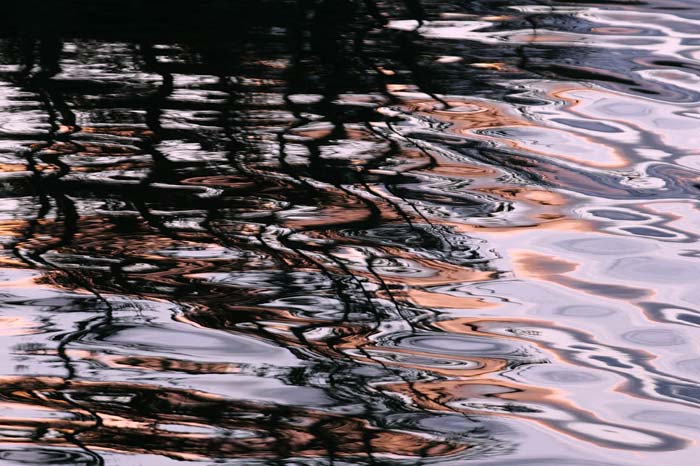
You see it in the viewfinder, but it’s not until later that you will get
pleasantly surprised by the beautiful artistic nature of some of your shots.
Just as there are numerous ways to project reflective photos, there are multiple ways to reflect on ourselves and our evolution as a photographer and that’s where the reviewing of past photo comes into play.
1. It can be used as a “walk down memory lane” where the images bring back thoughts of a fun shoot or experience. It can spur the desire to go to that spot again if it isn’t one of those once in a lifetime destinations.
We need to remember that photography is primarily about capturing special moments in time. Because of our growth in photography, it might lead to seeking out an old subject and approaching it with a new eye for composition or technique that was not known at that time.
2. How have we progressed as a photographer? Hitting the delete button or tossing slides in the trash to clear up space shows we have moved on from past years. It might seem difficult, but as our photography techniques have improved, along with digital equipment advances, we now have stronger material that can replace older files and finding images is simplified when there are fewer images to review.
3. How has our portrayal of a subject changed? Our “photographic eye” has also developed and we look at things differently now than in the past. Early on a tree might just have been a tree, whereas now it has new form and character. And we have learned to read and use light in a more dramatic way and that helps make for a stronger subject.
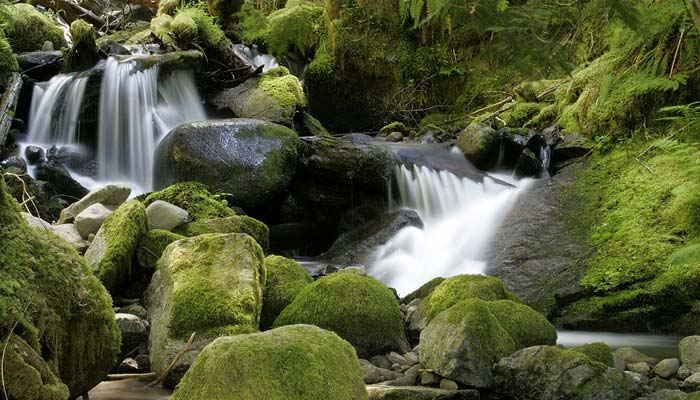
Sitting by a cascading stream is a great spot to sit
and reflect on the beauty that abounds all around us.
4. The written word is also an incredible form of reflection. When a person’s thoughts from the heart are set forth on paper these are often referred to as “reflections”. To contemplate what has moved us in some way and then express it in writing is what these reflections are. This is how we can look at our photography. How it has moved us? Was it the beauty that was seen and captured, an exciting moment, or was it a feeling that was brought out in a unique way? When we take a picture, it’s a reflection of what we’re feeling at that moment and those feelings influence our photography just as much as the actual technical aspects. You might want to include the written word during your photo shoots and take a few notes about what you were feeling when you captured various images.
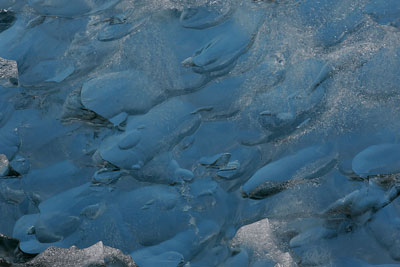
A close-up shot of an ice chunk from a glacier shows the hidden beauty when you begin to view subjects with a new perspective.
5. What were you favorite and best shots from 10 years ago and five years ago? Are they the same ones today? It’s good to keep separate files of those photos and continually update the files. This should be done at least once a year as enough new material is gathered to provide a good selection of work from which to choose. Keep old favorites in a different folder and look back between the two to see what similarities or differences you find. Has your thought process changed while shooting? Has your style, composition and technique improved? What makes the latest folder better than the previous work?
Reflections come in many forms and can be from within or externally visual. How we approach the topic is up to each one of us, but no matter how you reflect on it, it’s bound to improve your photography.
by Andy Long
First Light Photo Workshops
All text & photos: © 2010 Andy Long. All rights reserved.

Leave a Reply